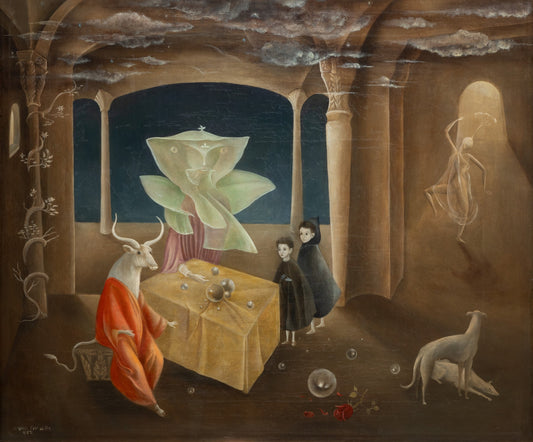Did you know that Scotland decriminalized homosexuality in February 1981? That was only 42 years ago! And it wasn’t until 2015 that the US Supreme Court announced its decision in Obergefell v. Hodges, which ruled that “same-sex marriage cannot be banned…and must be recognized nationwide.” I remember specifically where I was that day. I was at the happiest place on Earth, Disneyland Resort, Anaheim, CA with my friends. I remember going through every store inside the theme park to look for the rainbow Mickey Mouse pins for our friend, who is openly gay. Sadly, I do not recall if our mission to find them was a success or not, but I do remember having a great time and feeling exhausted by the end of the day. It was definitely a memorable moment in history for our country, especially for the LGBTQ+ community. Progress like Obergefell v. Hodges is so special when you consider what the queer community had to endure to get there. Past struggles and harsh realities of the queer lifestyle can be seen through a plethora of artistic works from previous generations that are still being uncovered today.
Researchers admit that finding queer artworks can be challenging. The best way to track these artworks requires going through the artists’ wills, diaries, or archives. Oftentimes, researchers would have to track down letters from family members and friends. Anne Lister’s (1791-1840) diaries were discovered, and researchers found coded messages that she devised herself. The codes were a mixture of Greek and a few mathematical symbols to discuss sensitive materials, including her own lesbian relationships. Another challenge researchers face is finding evidence of a suspected queer art piece, but not being able to recover it because it had been destroyed by the artist or the artist’s family due to it being too intimate or too revealing for others to see. It wasn’t uncommon for this to happen out of fear of persecution from the public or in some cases—the law.
George Platt Lynes (1907-1955) for example, was a fashion designer in the 30s and 40s, and also a photographer of theater and ballet. However, behind closed doors, Lynes’s real interest rested in photographing male nudity. He burned the majority of his prints, as well as the negatives, but his collection of over 600 negatives was saved and purchased by the Kinsey Institute after his death in 1954 due to cancer. At the same time, Duncan Grant (1885-1978) was a British landscape painter and textile designer, however, Grant’s private artworks were recently discovered under someone’s bed. These artworks were a collection of erotic drawings found in a folder marked with “these drawings are very private. Please give them to Edward Le Bas to do what he likes with them.” It was signed and dated “2 May 1959.”

To steer clear of legal or social backlash, artists had to find ways to protect themselves but still express their truth. Many took a page out of Lister’s book, using symbols and codes. One of the most famous queer codes was green carnations attached to the lapel of a jacket. Oscar Wilde, an Irish poet and playwright openly showcased it to the public eye and encouraged his circle of friends to do the same to signify their sexual identity. The green carnations eventually caught on, going on to be portrayed in famous Victorian artworks, becoming so much more than a small sign for Wilde and his friends. It became a symbol that’s still used to this day. In 2021, Elliot Page attended the Met Gala with a green rose attached to his Balenciaga suit.
During the same time as the green carnation, another queer symbol was beginning to take stride—the male peacock’s flamboyant and beautiful tail. In the painting done by Edmund Dulac called Charles Ricketts and Charles Shannon as Medieval Saints (1920), Shannon (right) can be seen holding a peacock's feather. This was used, “juxtaposing religious imagery,” by painting them as saints with halos around their heads. At the same time, peacock feathers were also commonly used in Art Nouveau and can be seen in interior designs. An example of this is James McNeill Whistler’s The Peacock Room (1877), which is currently at the Freer Gallery of Art in Washington D.C.


An additional queer code found in queer artworks is the incorporation of classical, mythical, and even biblical identities. Ancient Greek and Ancient Rome became a touchstone that queer artists choose to return to due to antiquity. An example would be a painting done by Simeon Solomon called Sappho and Erinna in a Garden at Mytilene (1864). Sappho is a Greek poet from Lesbos, which is where the word “lesbian” is derived from. The painting depicts two women in a sensual embrace with the dress strap slipping off the shoulder. Also, George Quaintance (1902-1957) is known for creating homoerotic artworks, such as gay cowboys, for magazines.
Looking back, it’s hard not to appreciate how far the LGBTQ+ community has come. Instead of hiding behind subtle symbols and clues, we have openly gay media for all to enjoy. Pride month is a time when cities openly brace the gay community. Queer artists can collaborate and share their work with the public. Although, with recent political movements that have been stirring—it’s all looking strangely familiar. It’s important to know where we have been, and make sure we do not fall back. Contemporary queer art is a joyful defiance, and it comes from visibility and celebrating a marginalized group.
©ArtRKL™️ LLC 2021-2023. All rights reserved. This material may not be published, broadcast, rewritten or redistributed. ArtRKL™️ and its underscore design indicate trademarks of ArtRKL™️ LLC and its subsidiaries.





